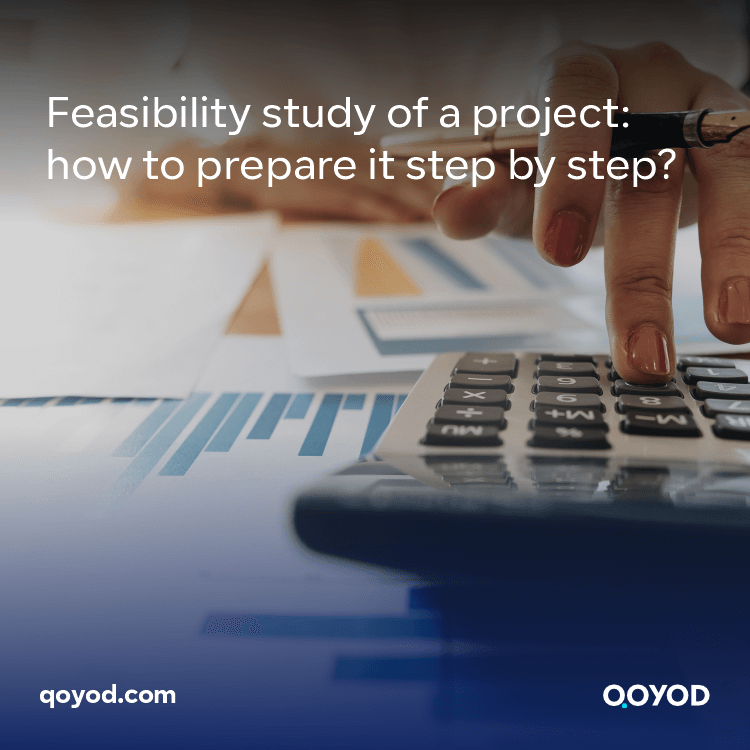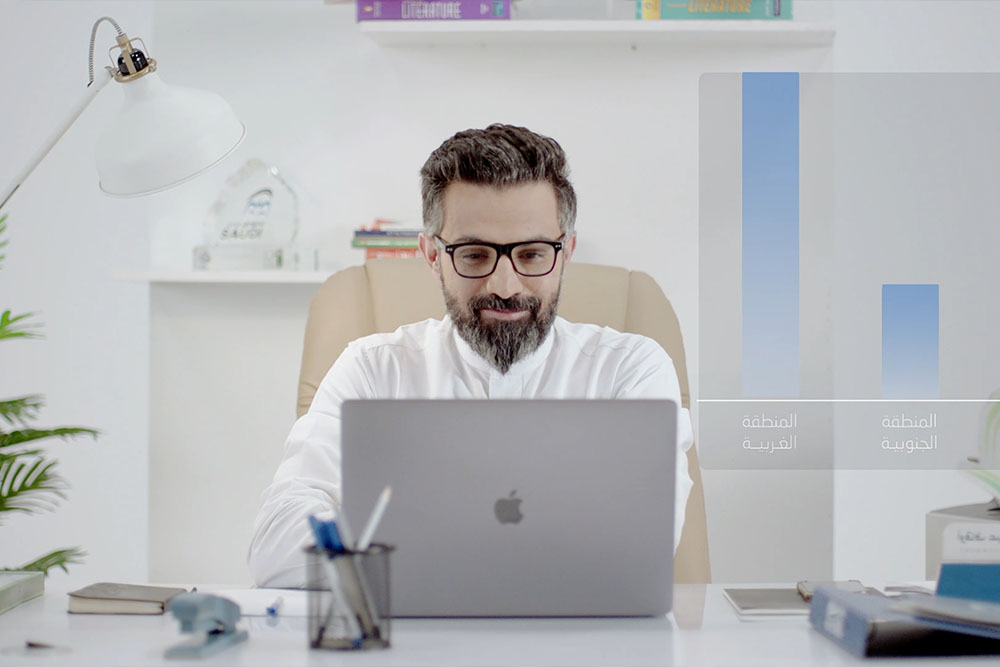In a rapidly changing business world, entrepreneurs and investors are looking for new opportunities that contribute to success and financial sustainability. Among the basic tools on which they rely for informed investment decisions is a process: a project feasibility study. It provides a comprehensive overview of the proposed project, starting from the commercial and financial aspects to the economic and social aspects, and at the end of this study, the person will have a clearer vision about the feasibility of the proposed project and the possibility of its success in the contemporary market. In this article, we will learn about the concept of a feasibility study, its types, as well as how to prepare it, so follow us.
What is the definition of a project feasibility study?
It is a critical process for assessing the feasibility and success of a proposed project, with the goal of gathering and analyzing information about the project, providing the necessary insights and in-depth analysis, and making an informed investment decision.
Types of feasibility studies
The feasibility study process of a project includes many different aspects that contribute to evaluating the feasibility and success of a proposed project, including the following:
Environmental feasibility study.
This research focuses on analyzing the project’s environmental effects, which involves identifying potential environmental consequences and determining the appropriate environmental actions to reduce negative impacts and enhance environmental sustainability.
Legal Feasibility Study
It focuses on assessing the legal aspects related to the project, including identifying legal requirements, applicable legislation, evaluating the necessary licenses and permits, and analyzing potential legal risks.
Technical Feasibility Study
The feasibility study of a technical project focuses on evaluating the technical and technological aspects of the proposed project and helps determine the availability of appropriate technology, the quality of equipment and devices used in the project, as well as the effectiveness of the use of approved technologies.
Administrative Feasibility Study
This study aims to assess the administrative capacity to implement and manage the project and includes analyzing the appropriate organizational structure and evaluating the human cadres and competencies necessary for the successful implementation of the project.
Marketing feasibility study
The marketing feasibility study of the project aims to determine the size of the target market, assess the demand for the product or service provided, help in understanding potential customers, analyze market behavior and competition, as well as identify appropriate marketing strategies.
Economic feasibility study for small enterprises
The project feasibility study aims to assess the economic aspects of the project and includes an analysis of the costs and benefits associated with the project, an estimation of the expected financial return, and an assessment of the project’s compatibility with the established economic objectives.
A legal feasibility study of the project
It focuses on assessing the financial aspects related to the project, including identifying legal requirements and applicable legislation, evaluating the necessary licenses and permits, and analyzing potential legal risks.
Financial Feasibility Study
Any feasibility study of a financial project analyzes the financial aspects of the project and assesses its financing potential, including estimating capital and operating costs, analyzing potential financing structures such as debt and equity, and assessing the ability to bear financial risks.
Note
It is important that these studies are carried out accurately and carefully, that they are based on reliable information and data, and that they may require the use of experts specialized in different fields or accounting programs, such as the Qoyod program, to conduct the necessary analyses and evaluations.
How can a feasibility study be done for a small project?
After we learned what the concept of a project feasibility study is and its types, the time has come to know how to prepare it, and it is worth noting that the work of this study is an important step to ensure the success of the project and achieve the desired return. The following is the method, which is as follows:
Setting basic objectives
Before you start preparing a project feasibility study, you should define the basic objectives of the project and ask yourself: What would you like to achieve through this project? Specific goals may be to increase income, create jobs, meet specific market needs, or even offer a unique product or service, and the goals must be clear and measurable.
Determination of project scope
Once the objectives have been defined, the scope of the project must be determined. Which products or services will it provide? What geographical areas are you going to target? The main determinants of the project must be identified, including:
- Expected production volume.
- Possible timelines.
Market study
Market analysis is a crucial part of the feasibility study, as it must examine the target market, determine the market’s need for the product or service it intends to provide, analyze potential competitors, and identify the unique opportunities that your project can offer.
Based on available data and statistics, undertake preliminary research to measure demand, target audiences, and market trends.
Define project requirements.
Identify the requirements necessary for the successful implementation of the project, which may include human resources, equipment, raw materials, technology, and legal permits. The expected costs must be estimated, and the timeline for obtaining these requirements must be determined.
Identify sources of funding.
Remember that in order to study the feasibility of a small project, it may require financing for implementation, so identify potential sources of funding, such as commercial loans, investor funds, government support, or even self-financing, then evaluate the available options and the likelihood of obtaining the necessary funding to implement the project.
Risk Study
The potential risks that the project may face must be analyzed, their impact on its success assessed, including competitive risks, financial risks, operational risks, as well as changes in the market or legislative environment, and then identified ways to deal with the risks and reduce their impact on the project.
Develop plans and strategies.
Based on the previous information and analysis, develop plans and strategies to achieve the objectives of the project and the steps necessary to implement them and achieve tangible results, which can include marketing plans, operational plans, in addition to financial plans, and time plans.
Note
The study should be accurate, realistic, and include all important aspects, so it is useful for you to consult business experts, use effective accounting software, such as restrictions, or even benefit from the expertise of people who have similar experiences in their small projects.
How to conduct a feasibility study for a clothing store project
When conducting a feasibility study for a clothing store project, there are several main points to consider, which are as follows:
Determine the target audience.
Determining the target audience is crucial in studying the feasibility of a clothing store project, as you must understand the needs and desires of potential customers, determine age groups, nationality, and style you are targeting, and you will also need to conduct market research to understand fashion trends, the interests of potential customers, and identify opportunities in the market.
Financial Feasibility Study
The financial feasibility study includes estimating the expected costs of opening and operating the shop, including rental costs, impact, inventory, marketing, wages, and other overhead expenses. The expected revenue and potential profitability of the project must also be estimated.
This study could include: preparing financial projections for several future years; and analyzing critical points. Such as the recovery point and the profitability point.
Market study
The market study includes an analysis of trends and developments in the local clothing market and an assessment of the size and potential growth of the market, which should include an analysis of the economic, social, and cultural factors that may affect the clothing market.
Statistical data, industrial reports, and research available for this purpose can be used.
Competitor study.
The analysis of competitors must include a comprehensive assessment of the competitive shops in the target area, as the strengths and weaknesses of each competitor must be identified and potential opportunities and threats assessed.
Access to competitive stores, evaluation of their services, configurations, prices, and marketing policies can be used.
Technical project feasibility study
The technical feasibility study includes determining the appropriate location for the store and evaluating infrastructure requirements, such as space, interior design, display, and necessary lighting.
You should also consider the operational process, determine the equipment, tools required, inventory requirements, sales and purchasing management system, and any other technology you need to run the shop efficiently.
It is worth noting that accounting programs will undoubtedly help you in this regard and give you a comprehensive report on the sales and purchase management system and even inventory requirements. Examples of these programs are: Qoyod Accounting Program.
Marketing study
The marketing study includes determining the marketing strategy, the appropriate means of promotion for the clothing store, identifying the appropriate distribution channels, developing a price strategy, and determining the appropriate promotional efforts to attract customers and increase brand awareness.
The use of social media, local advertisements, and promotions to promote the shop can be considered.
Conclusion
We realize that making a successful investment decision is not just a matter of luck or speculation, but is the product of careful analysis and comprehensive information provided by a project feasibility study, through market assessment, risk analysis, and estimation of costs and revenues; you can provide a clear picture of the proposed business opportunity, and its potential feasibility, and it is worth noting that we understand that the final decision to invest depends on several factors, Including: personal expectations and the investor ‘ s overall strategy; however, it is important to stress that the feasibility study provides the tools and information needed to make a deliberate and informed investment decision, helps to reduce risks and increase chances of success, and reflects the leadership of investors seeking to grow and sustain a competitive market.
Success lies in your ability to turn a feasibility study into a realistic and completed business plan, and it is worth noting that the Qoyod program helps you in this regard without a doubt and also offers all its customers: electronic invoice systems as well as POS systems, stores, customers, etc., making it an effective accounting program.
After knowing what the concept of a project feasibility study is, its types, and how to prepare it, try Qoyod now for free and for 14 days, as it is an accounting program that makes your life easier.
Join our inspiring community! Subscribe to our LinkedIn page and Twitter to be the first to know about the latest articles and updates. An opportunity for learning and development in the world of accounting and finance. Don’t miss out, join us today!




